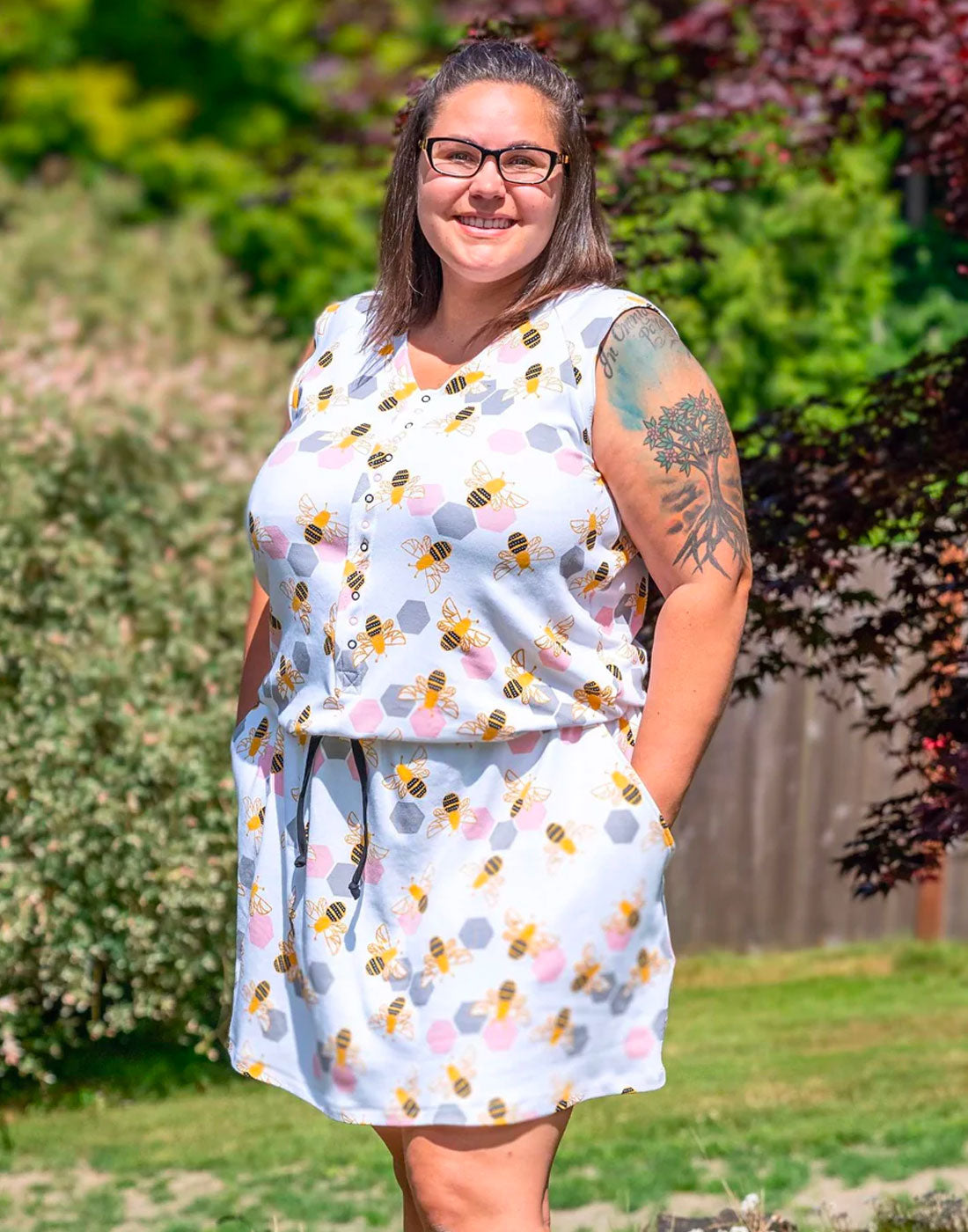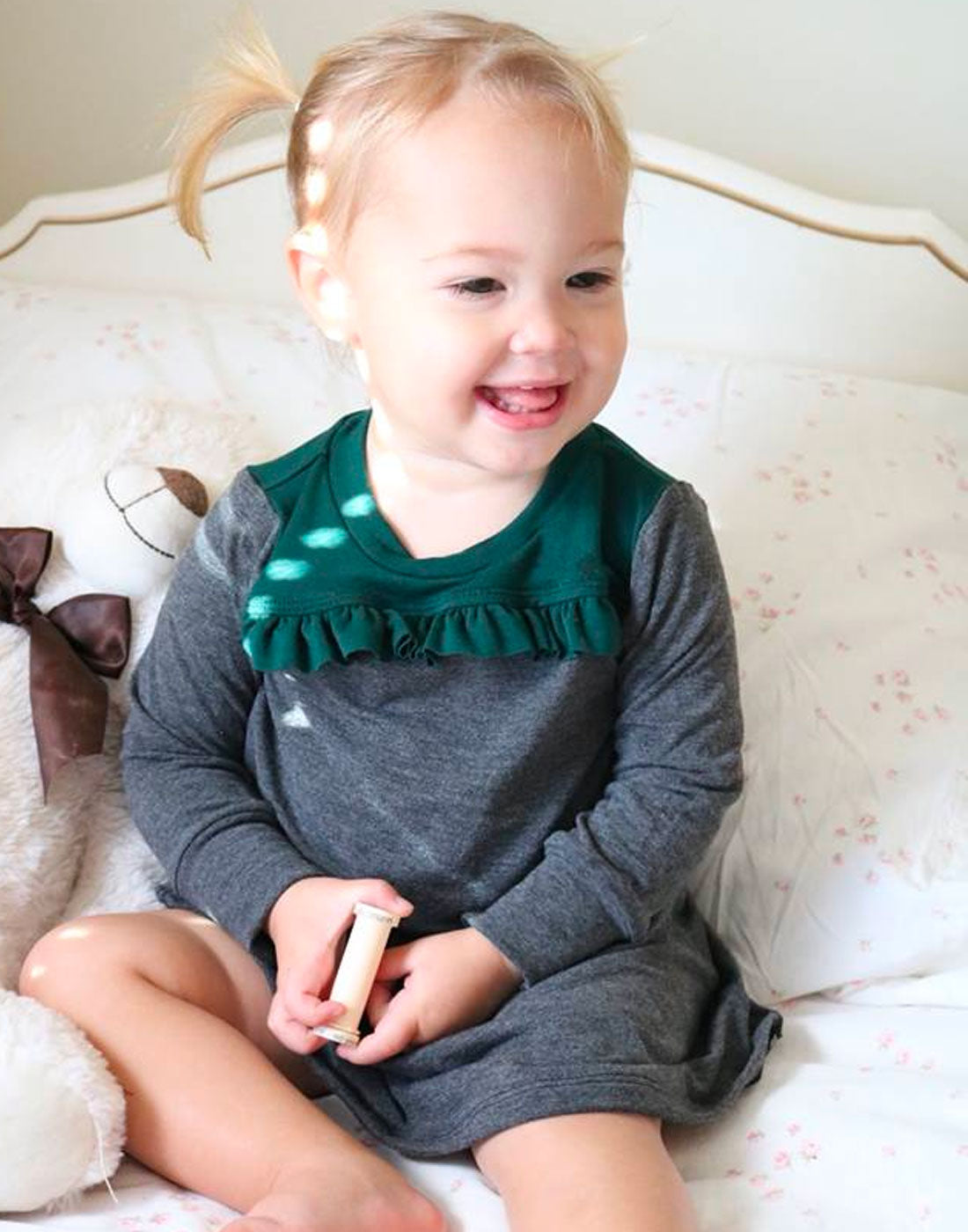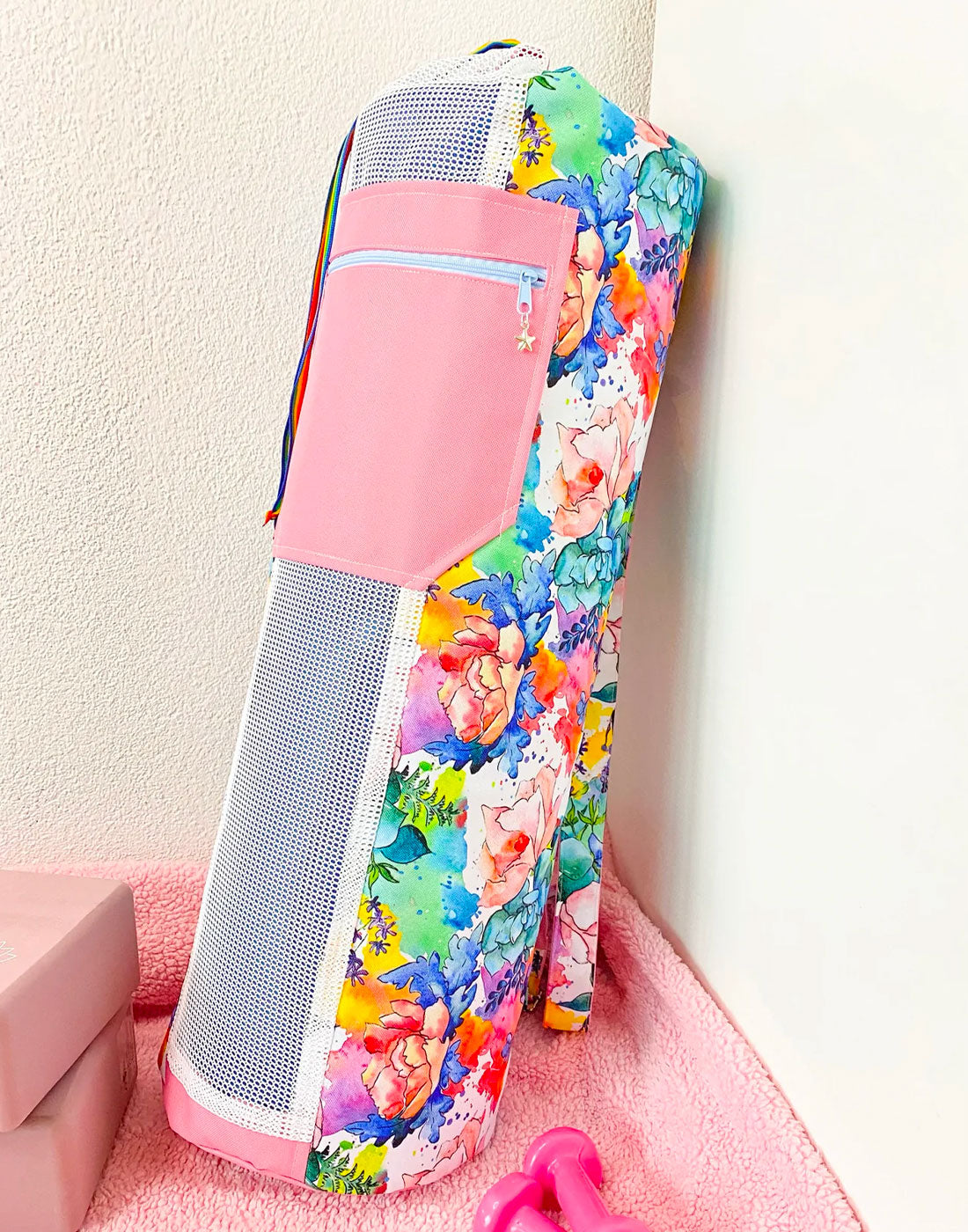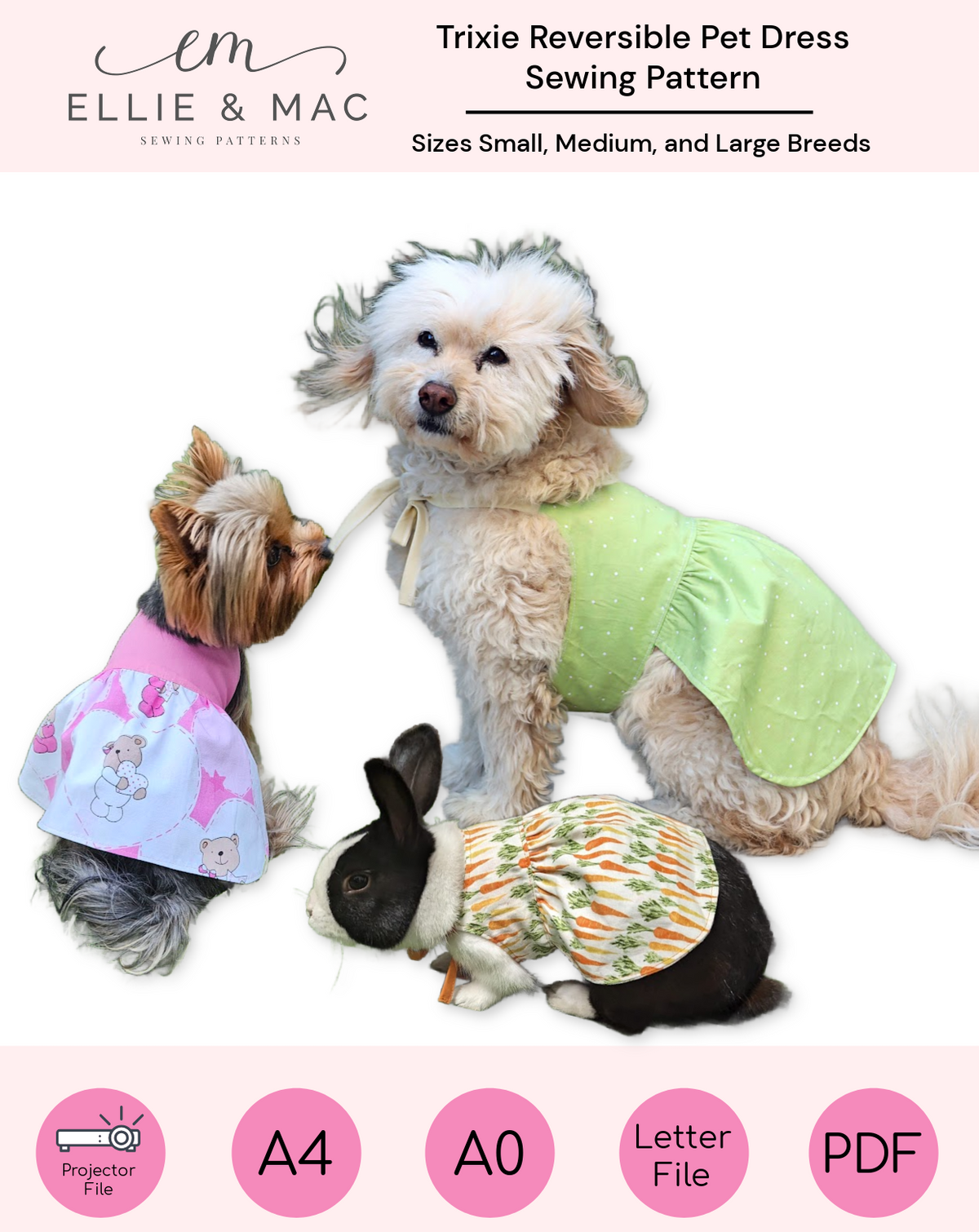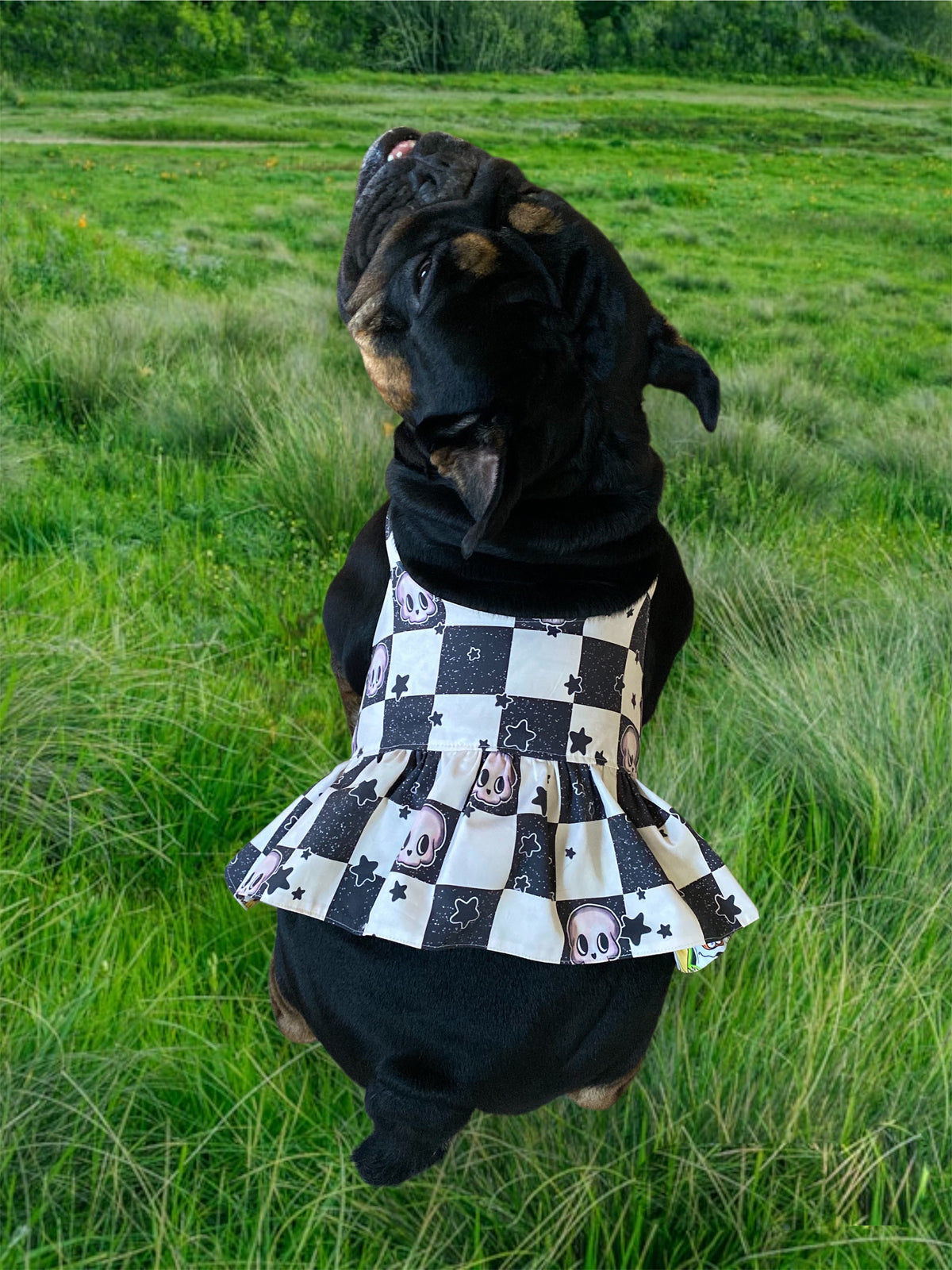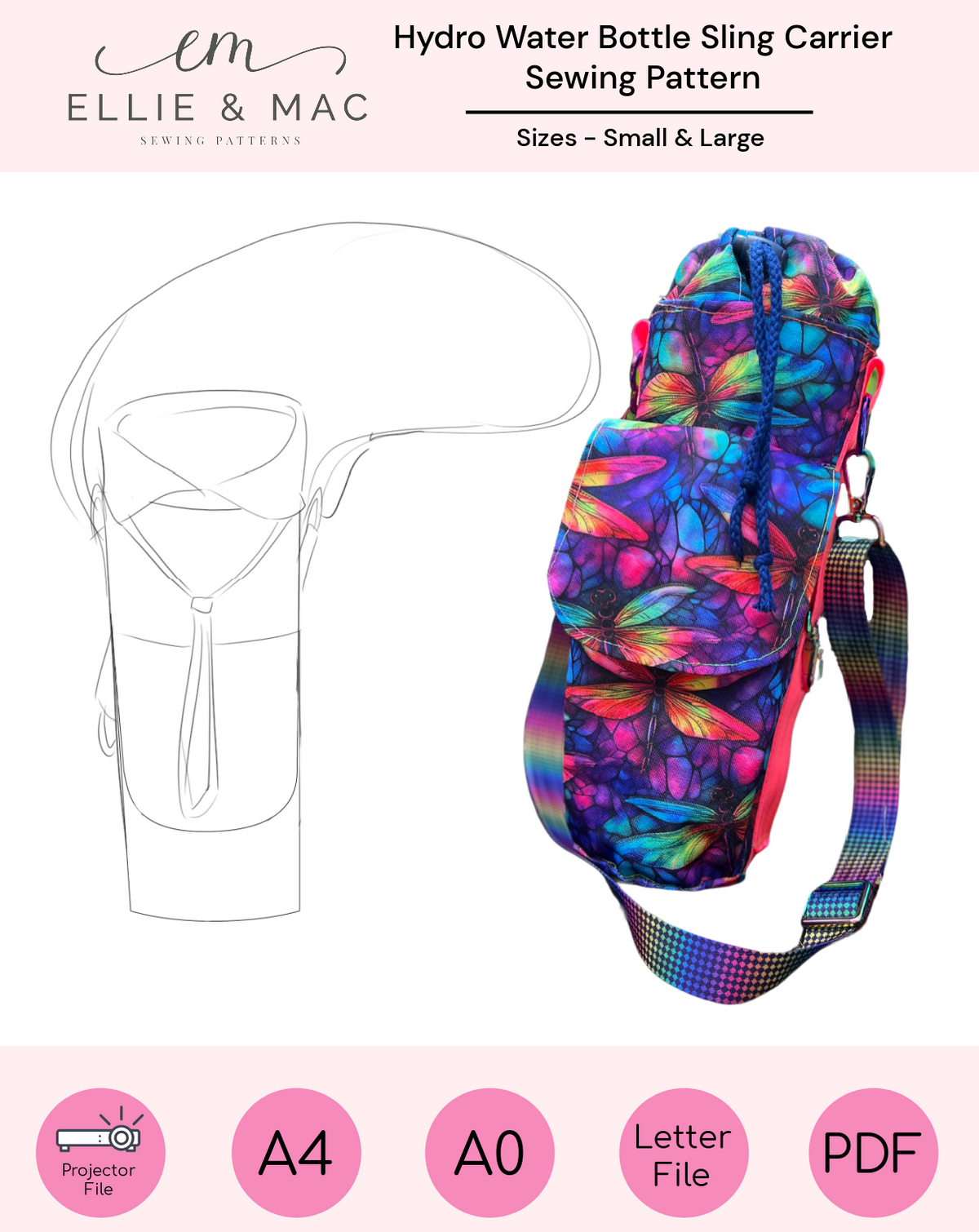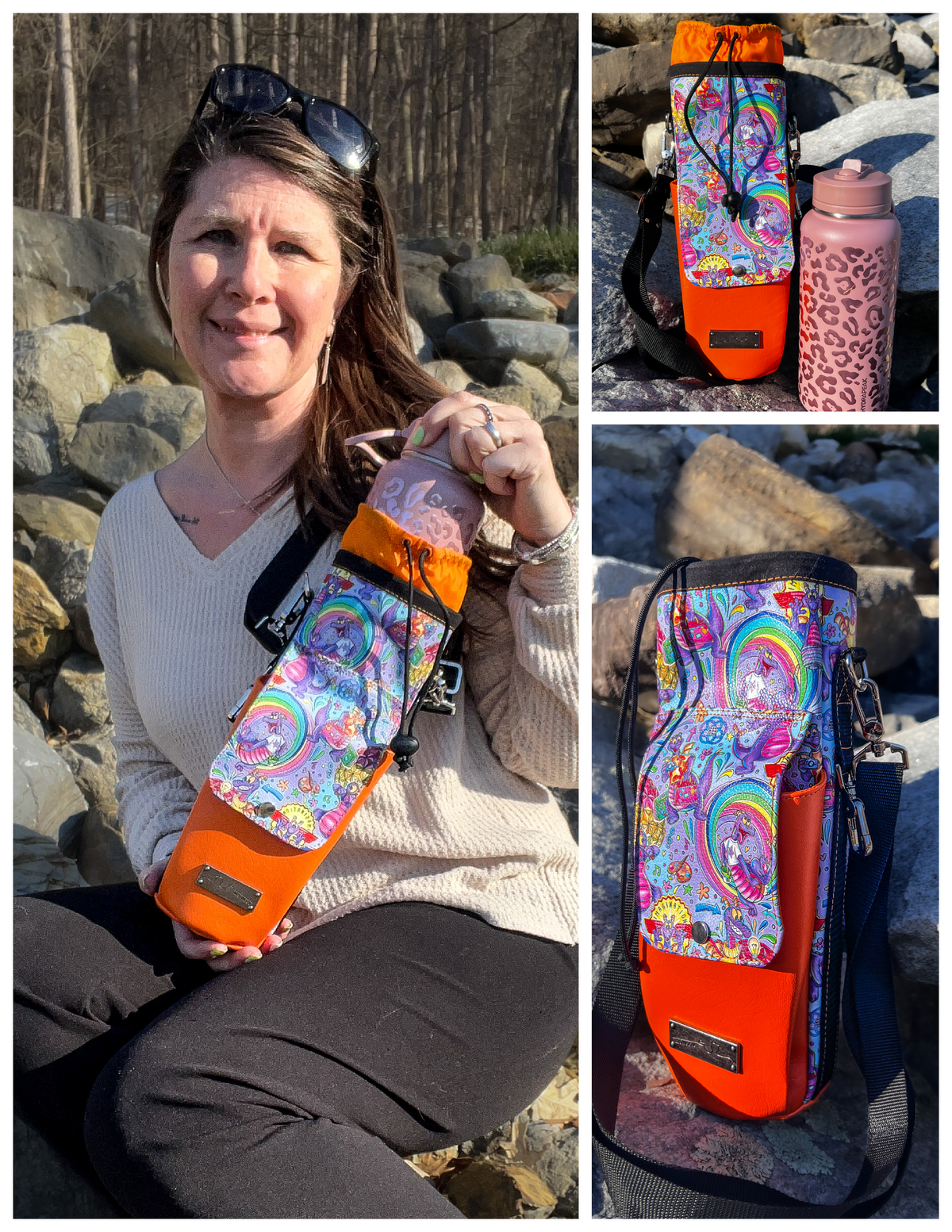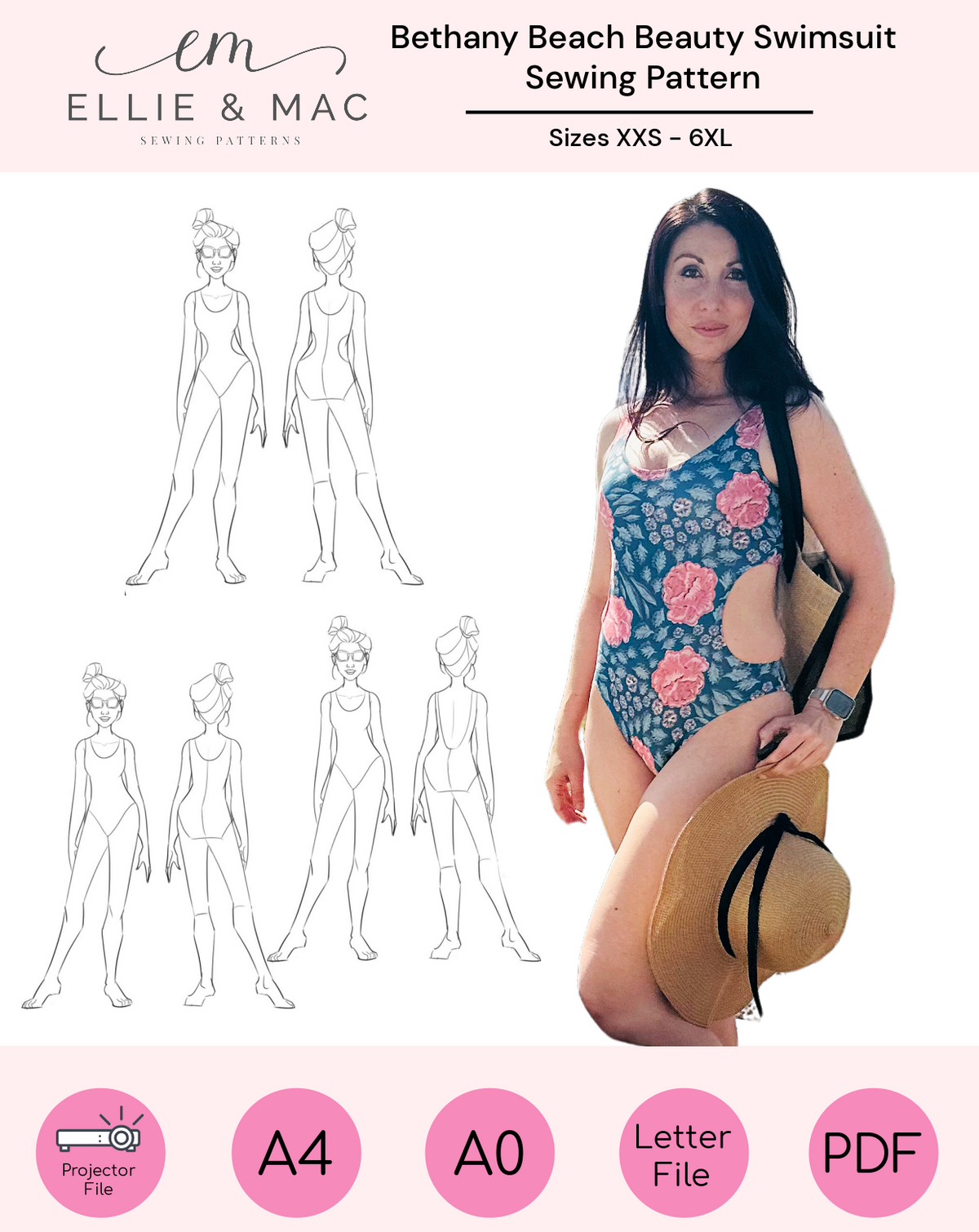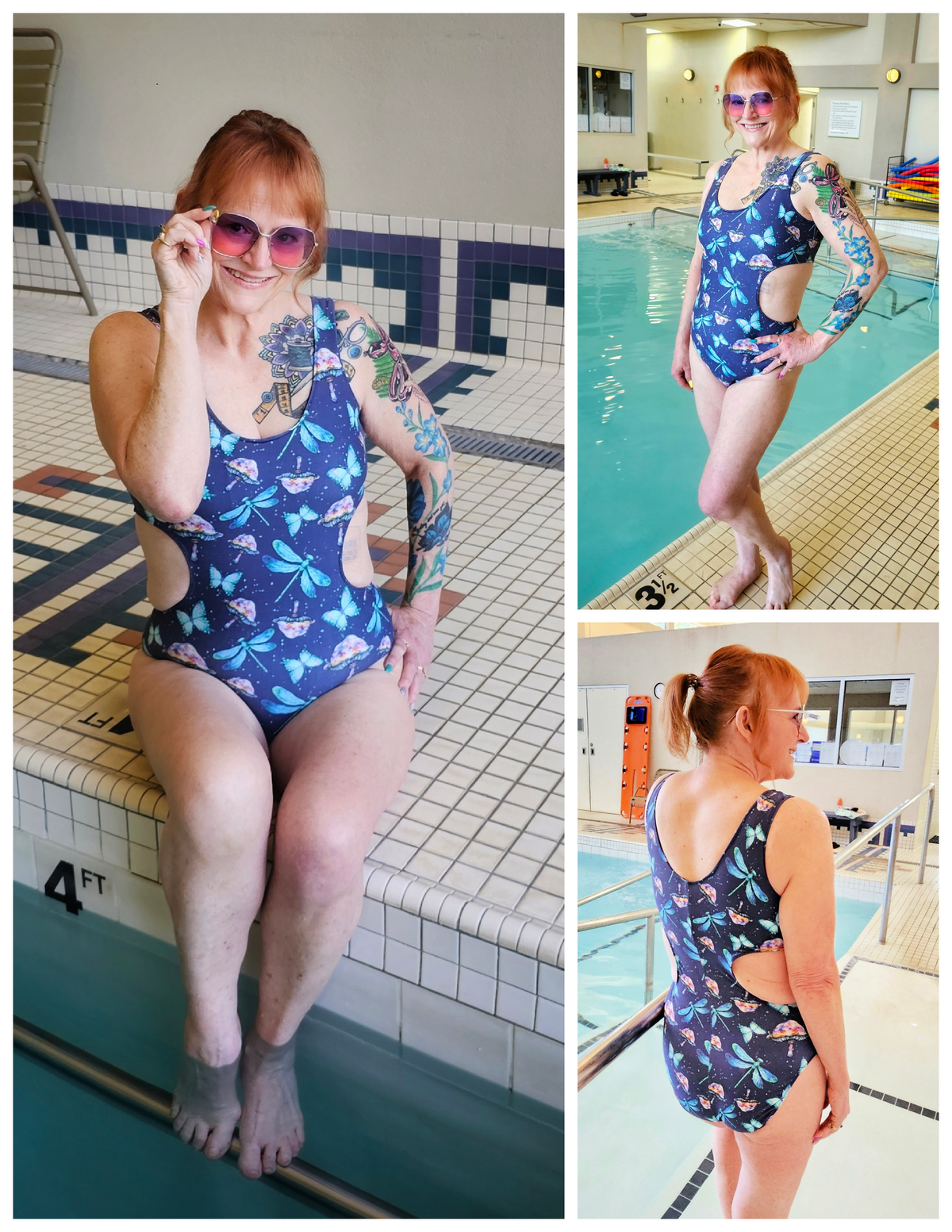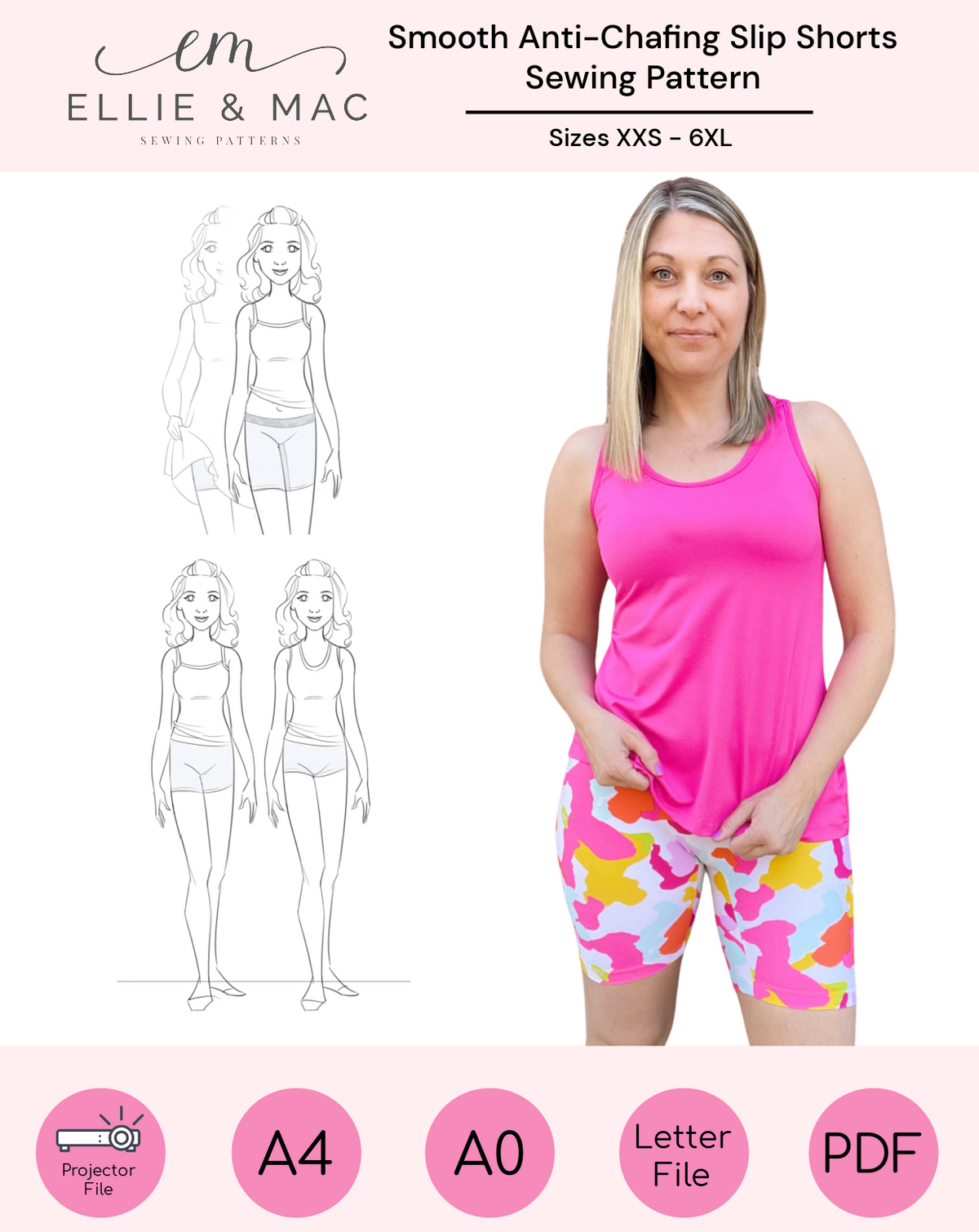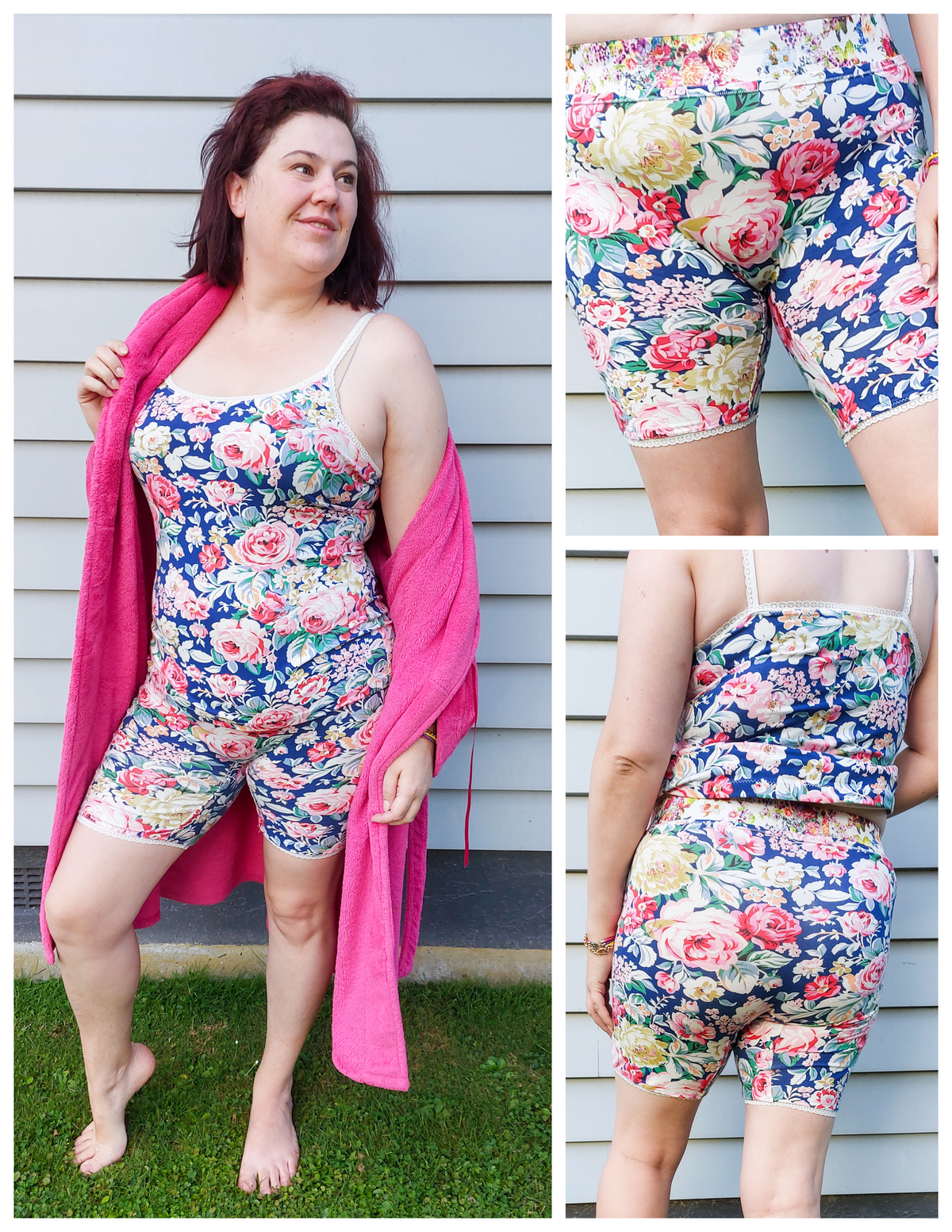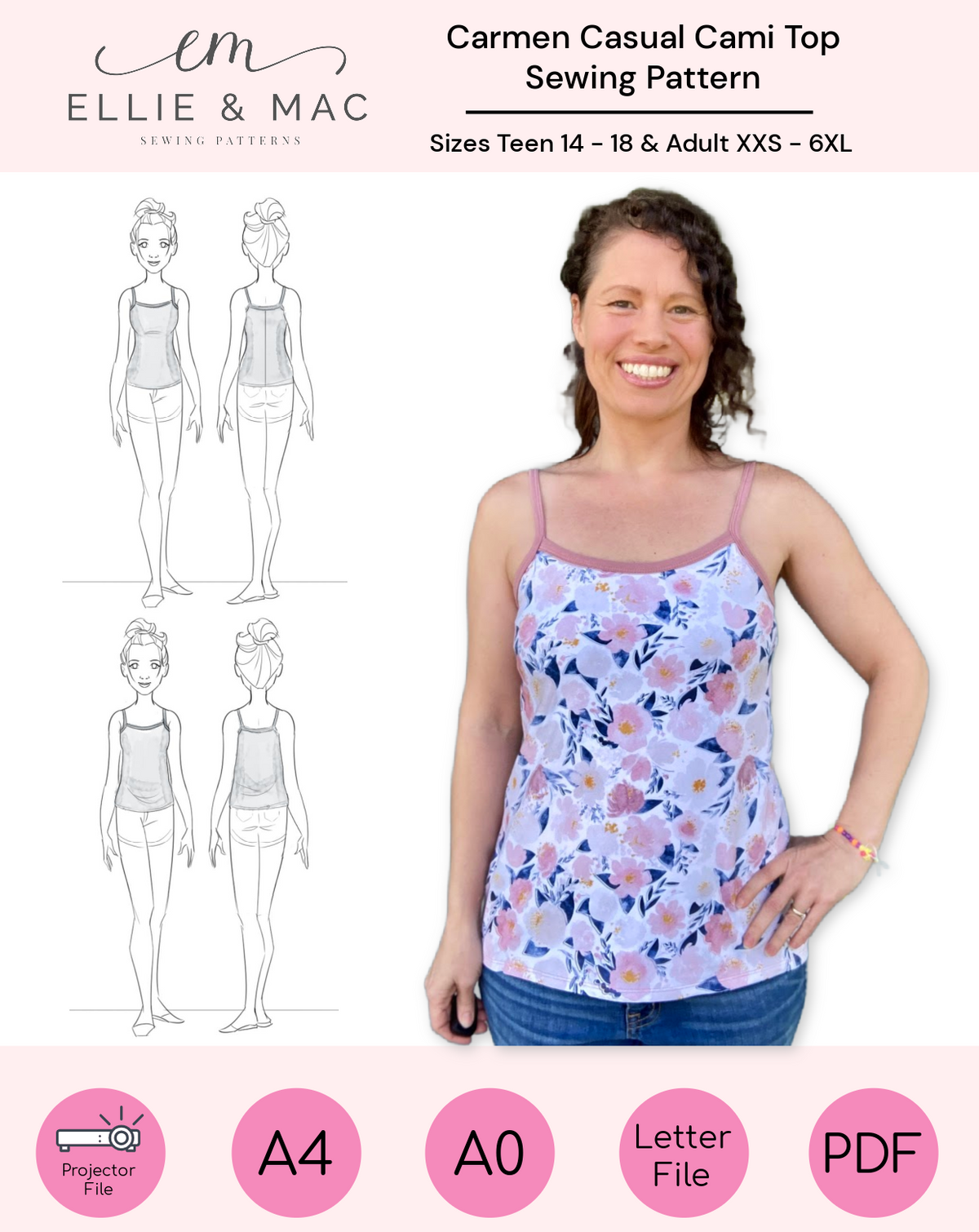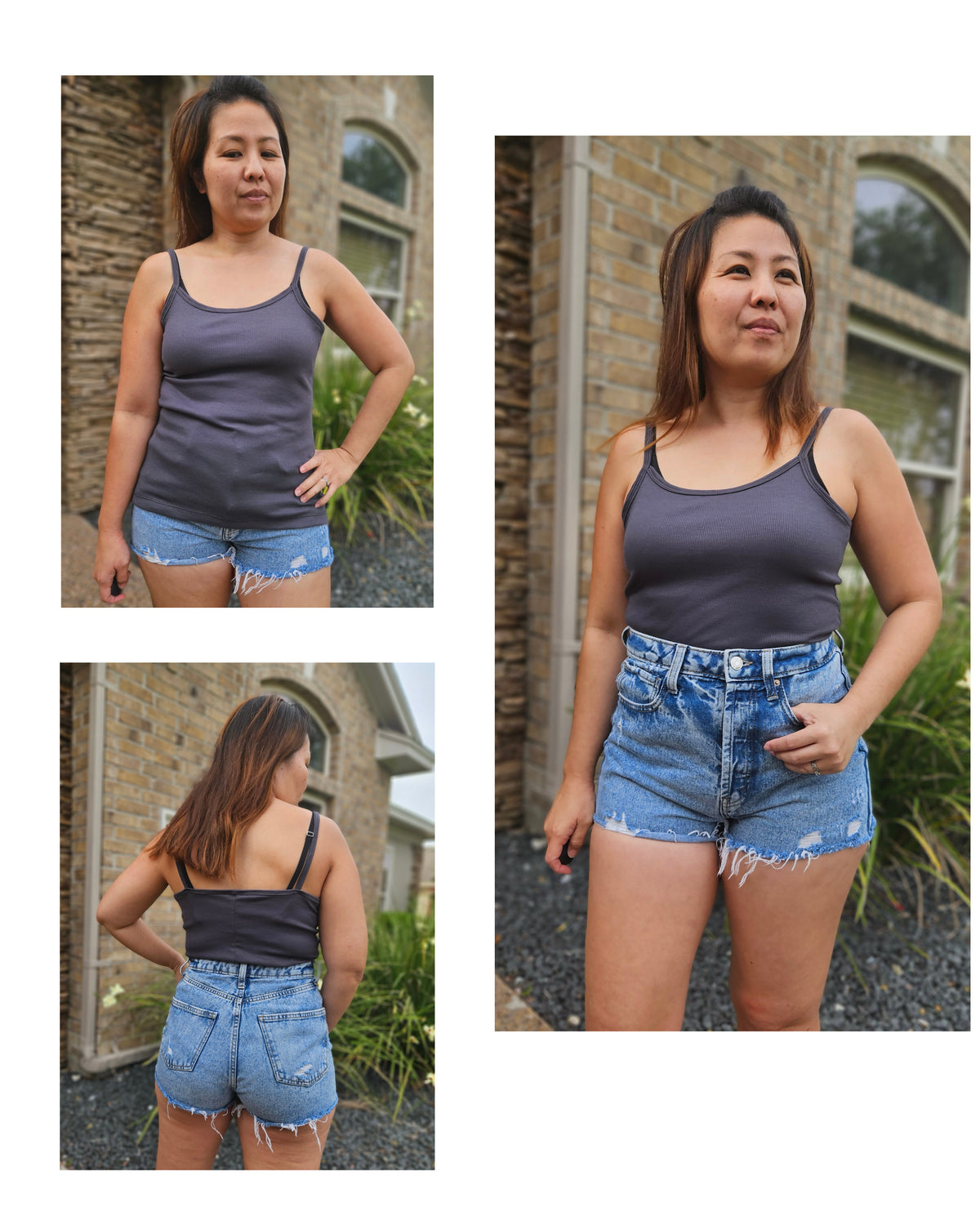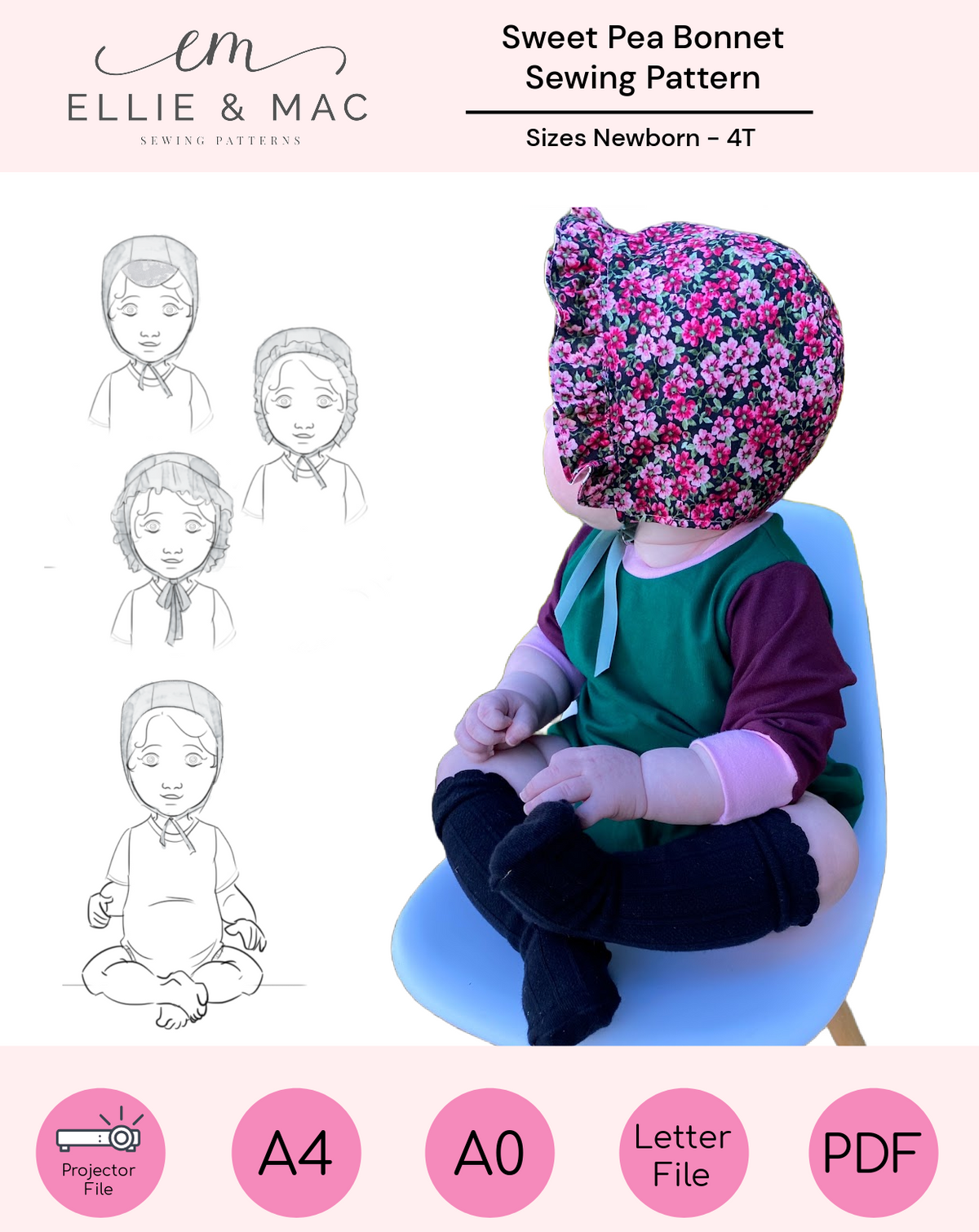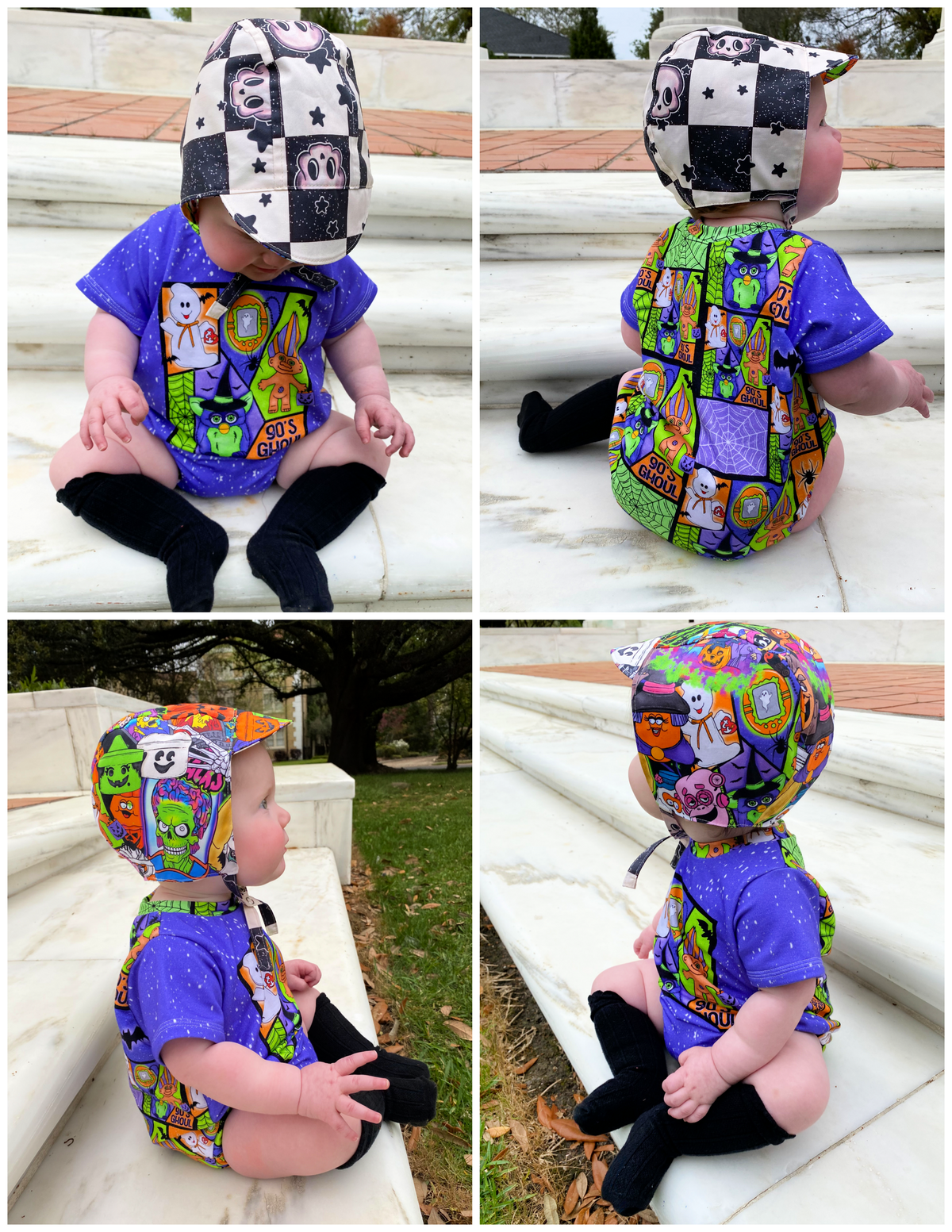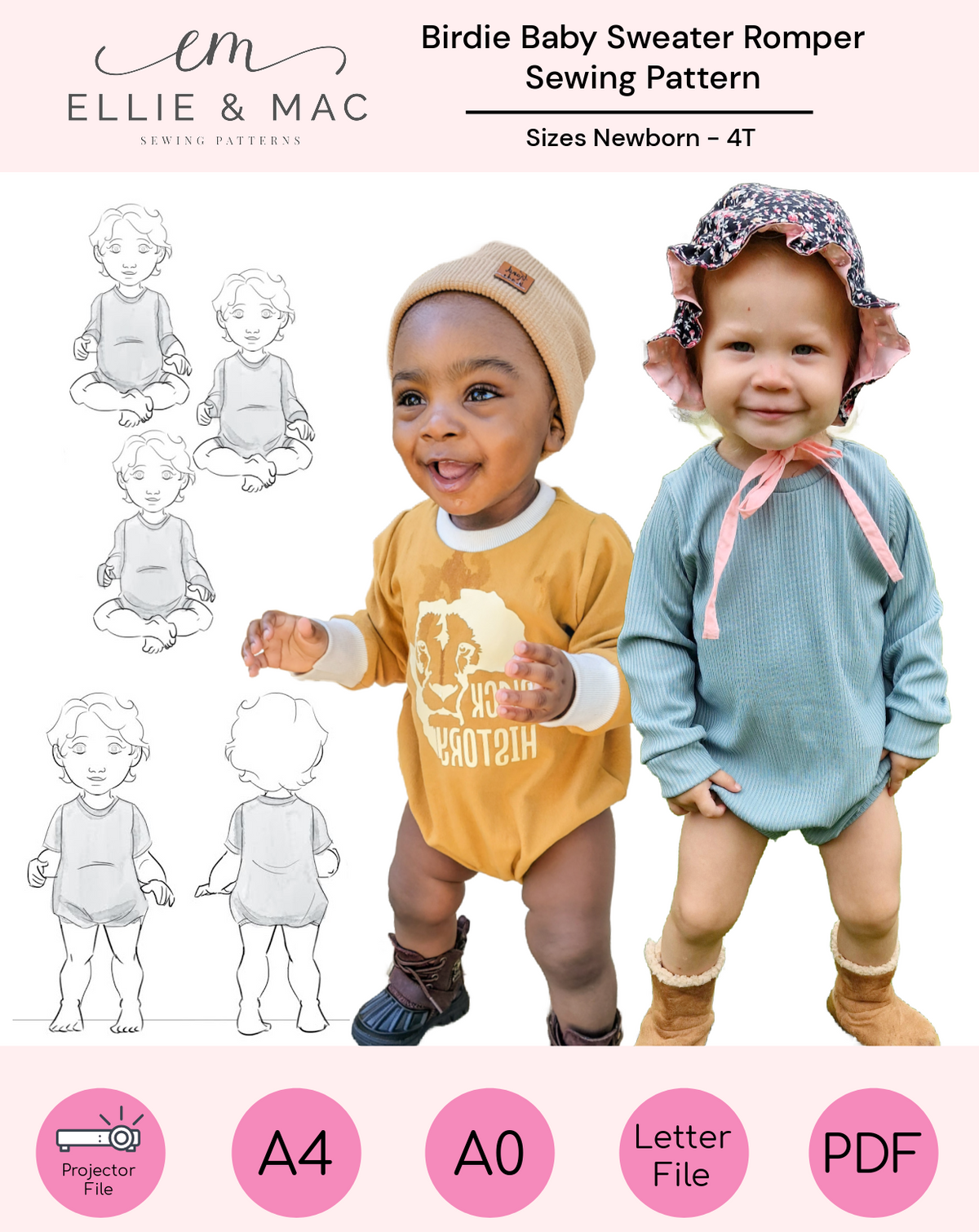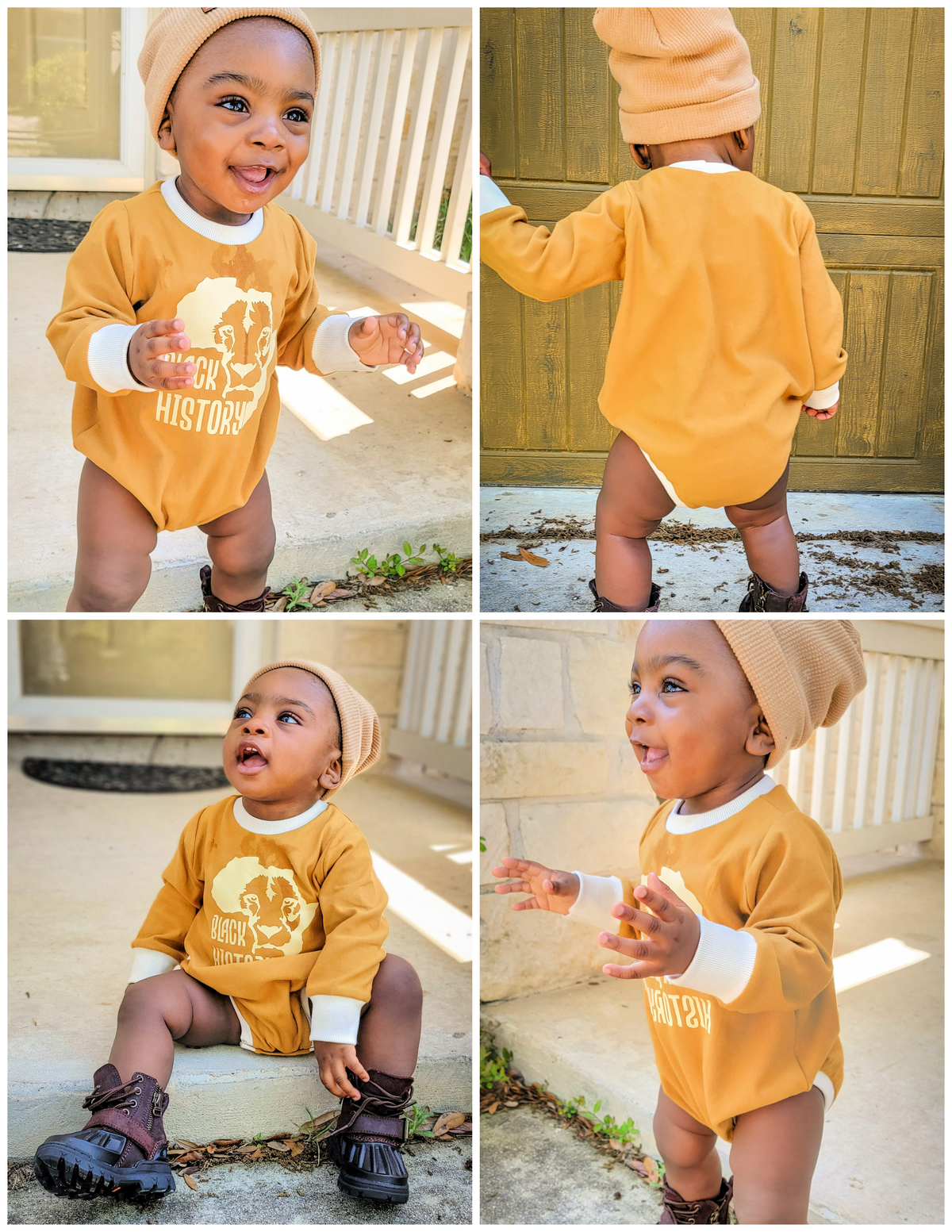 Hey all! Amy Day here, you might have seen me around the Ellie and Mac Facebook page posting my work from time to time. I’ve only been sewing for a year but I love to get inventive and be creative with pattern hacking.
Hey all! Amy Day here, you might have seen me around the Ellie and Mac Facebook page posting my work from time to time. I’ve only been sewing for a year but I love to get inventive and be creative with pattern hacking.
As you may know if you’re familiar with my posts, I love to try to give information and tips on how I achieved certain elements of my dresses that I have hacked from Ellie and Mac patterns, so I was so excited when Manda reached out to ask if I would write this blog post with a tutorial for you.

The topic of this blog is how to alter a back bodice pattern to have a cut away or cut out element to it. The dress I have made for this tutorial is using the Ellie and Mac Tres Belle Pattern, with sleeves from The Puff Sleeve Dress Pattern. The beauty of this hack is that it can be applied to almost any pattern, so you can use lots of other Ellie and Mac patterns to get the same effect.
THINGS YOU WILL NEED:
- Pencil/pen
- Ruler
- Paper
- Scissors/rotary cutter
- Ellie and Mac Tres Belle Pattern, or another Ellie and Mac pattern of your choice
- Fabric (I am using cotton jersey fabric for this dress)
Optional but useful:
- French curve ruler
- Pattern weights
- Carbon paper and tracing wheel
HOW TO CREATE THE HACK:
The first thing you want to decide is whether you want your cut out to be lined or banded as this will create two different looks.
I will be working with a cut away with bands today, as I wanted the dress to have a fun colour pop, but I will include instructions on what you would need to do to create a lined version as well.
The cutaway is created by separating the back bodice into two pieces that overlap along the armscye. I will refer to these pieces as the upper back bodice and lower back bodice.
First I traced the outline of the Tres Belle back bodice onto a piece of paper, as I didn’t want to be cutting into the original bodice piece. Then I drew the shape I wanted the cutaway to be. It’s useful to use a French curve ruler for this to help you achieve smooth curves.

I intentionally positioned my cutaway so my bra back band and straps would not be visible. To work this out you can hold the original pattern piece up against your body and see where your bra sits in comparison to the armscye to help with your positioning.
If you are making your cutaway with bands, remember you will have more coverage than the pattern piece alone - you will lose the seam allowance from your back bodice pieces (1/4” from each cut edge), but you will gain half the width of your band (less seam allowance x2, 1/2”). (If you are lining it instead, you will just lose your seam allowance and not gain anything, so you would need to add 1/4” seam allowance to the size you want your cut-out to be).
Remember the width of your band needs to be two lots of seam allowance (1/2”), plus twice the width you want your band to be, as it will be folded in half.
I wanted to see 1/2” of band once it was attached to my bodice, so I cut my band 1.5” wide … double the width I want to see plus two lots of 1/4” seam allowance.
To work out the length of the bands you need, measure the length of the bottom edge of your upper back bodice and multiply this by 0.85. The band wants to be a bit shorter than the bodice so once it is attached it will stop the cutaway from gaping open and hold it more firmly against your back. Once you have done this, do the same for the lower bodice piece by measuring the top edge and carrying out the same calculation.
ATTENTION: here is a tip with your bands that I didn’t do, and didn’t realise until after I had attached them to my back bodice pieces that I really should have done! The cut end of your bands at the side seams will finish at 90 degrees to your main back bodice pieces, this means if you just cut them as I have described above, they might not be quite long enough to make it into the seam allowance when you add your sleeves.
Mine were a little short, but I fudged it and made it work – what would have been better would be to add 1” of additional length at either end of your band to make sure it will be long enough to reach the seam allowance, and then you can trim away any excess. Be sure to mark where your extra inch finishes at either end so you know how much you need to stretch your band as you attach it to the bodice.
On the picture below my bands finish where the red lines are. The blue line indicates the seam allowance when you attach the sleeve. As you can see, part of the band will not be caught by the seam allowance in this position. The green line indicates where I have suggested you add an inch at either end of your bands to ensure your bands are long enough to be fully caught by the sleeve seam.

Going back to your paper pattern - Once you have drawn your cut out on to your traced out back bodice pattern, you need to make another copy. The reason for this is as the upper and lower back bodice pieces overlap, you can’t get both pattern pieces out of one back bodice pattern.
You can either put your back bodice piece with your cut out drawn on up to the window with a new piece of paper over the top and trace it on to the new sheet, or you can use carbon paper.
For carbon paper, you need to have a new sheet of paper down on your work surface, then the carbon paper colour side down on top of that, and then the back bodice pattern piece that you have drawn your cutaway shape on to on top of that. I would use pattern weights to hold all the layers together. Then all you need to do is use a tracing wheel to draw around your back bodice pattern and the cutaway.

Whichever method you used, you now have two identical copies of the back bodice with your drawn on cut away. Cut an upper back bodice piece from one copy and a lower back bodice piece from the other. Voila, you have your pattern pieces.


Probably a good time now to get a cup of tea and reward yourself with a biscuit or two (yes I’m British!).
Ok, so you now have the two back bodice pieces and you know the size of your bands to finish the cut away edges of each piece. Next step is to assemble the back bodice.
Step one, attach the bands. Press the bands in half and cut a small notch to mark the centre. Cut a small notch to mark the centre of your upper and lower bodice cutaway edges as well. Align the notches of the band to the upper bodice and pin or clip together. Then ease the rest of the band along the rest of the bodice cut away edge. Do the same for the lower back bodice.

NOTE: as I mentioned above, you will add one extra inch at either end which I did not do, so yours should look just like mine but with one extra inch of band sticking out at either end of the armscye.
Attach the band to the bodice either with an overlocker or a stretch stitch on your sewing machine like a zigzag. You will need to stretch the band a little to ease it into the bodice as you attach it, since it is a little shorter in length. Do the same for the lower bodice.


Place your lower bodice piece on top of the original back bodice piece that you didn’t cut up. Overlap the upper bodice piece so that the shoulder and waistline is in line with the original bodice pattern piece. Pin or clip your upper and lower back bodice pieces together in this position.

(This is when the penny dropped and I realised I messed up and the end of my band wasn’t going to be in my seam allowance! Don’t forget to add that extra inch at either end!)
You will now need to sew these pieces together to make one back bodice piece. I would either tack it together by hand or with a stretch stitch on your sewing machine.

I used a lightning stitch for mine, and as you can see I fudged the pieces so the edges of my bands would be in my seam allowance.
Great job! You now have effectively got a back bodice piece in the overall shape of the original bodice piece, and you can go ahead and sew the rest of the bodice together according to the Ellie and Mac Tres Belle tutorial.


If you are lining your back bodice instead of using bands - cut out two upper and lower bodice pieces, one in your main fabric and one in your lining fabric. An optional step would be to attach clear elastic to the neck and cutaway bodice edges to stop any gaping (this will give you the slightly pulling in effect that the bands also give). If you wish to do this, cut a piece of 1/4” clear elastic approximately the length of the neckline or cutaway edge. Using a stretch stitch on your sewing machine, attach this to the wrong side of your main fabric back bodice neckline and cutaways while stretching the elastic slightly. Cut off any excess elastic.
With right sides together serge or sew (using a stretch stitch) the neckline together and the cutaway edge of your upper back bodice. Turn right sides out and press. You would need to make sure there is enough vertical room between the neckline and upper edge of the cutaway to allow you to turn this piece.
If there isn’t room to turn, you could just attach the lining along the cutaway section and use either a band or binding for the neckline. Once the lining is attached you can topstitch using a stretch stitch if you wish.
Then you can attach the upper and lower bodice pieces together using the same method as I described for the banded version, and proceed to finish the rest of your bodice according to the Ellie and Mac tutorial for whichever pattern you chose to use.
Well that’s it, you got to the end! I really hope this was a helpful tutorial for you. It was so much fun to write, and I would love to see any dresses you make using this hack!

(Written by: Amy Day)


